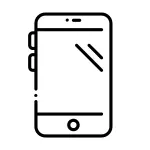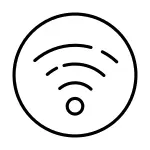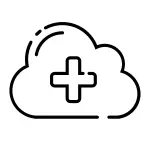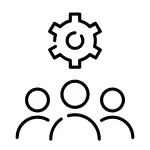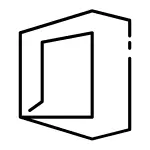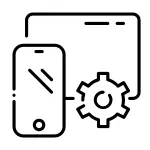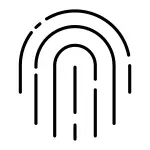Due to its adaptability and potential for cost savings, 3D printing — also known as additive manufacturing — made a rapid impact on several industries. Among these industries, the discipline of veterinary medicine has recently focused on 3D printing.
Since they are less expensive and can manufacture any shape, vets now use 3D printing to produce medical equipment. Moreover, designs can be created within hours, depending on the size and complexity of the project as well as the quality of the 3D printer. As of this writing, at least eight veterinary medical schools are using 3D printing as a cutting-edge teaching and clinical tool.
This article will explore the growing presence of 3D Printing, particularly in the Veterinary Medicine industry.
What is 3D Printing?
The creation of three-dimensional physical products from a computer design is referred to as 3D printing, also known as additive manufacturing.
Additive methods also help make 3D printed objects. Layers of material get laid down sequentially to build up the desired object. You can view a cross-section of the object in each of these layers. Compared to more traditional production methods, 3D printing allows you to create more complicated shapes with less material.

The Benefits of 3D Printing
For good reasons, 3D printing has been gaining popularity. Here are a few benefits of 3D printing compared to traditional manufacturing techniques.
Streamline Prototyping and Manufacturing
Without the need for costly models or specialized tools, 3D printing offers businesses a low-risk, low-cost, and quick way to produce prototypes that let them test a new product’s effectiveness and speed up development.
Further, businesses from various sectors will use 3D printing for rapid production, enabling them to produce small batches or quick runs of customized goods at a lower cost.
Produce Functional Parts
Over time, 3D printing has improved in functionality and accuracy, enabling the creation and acquisition of proprietary or inaccessible parts to facilitate the timely production of a product. In addition, machinery and technology degrade with time and may require prompt repair, a problem for which 3D printing gives an accessible remedy.
Create Realistic Models
Even though 3D printing might not be able to replace other production processes completely, it does offer a low-cost way to create models for 3D concept visualization. Furthermore, modelling applications are expanding as the cost of 3D printing decreases and the technology becomes more widely available.
Evolving Your Veterinary Practice through 3D Printing
You can easily use the innovation of 3D printing technology to benefit our non-human companions and enable us to provide them with more than just routine veterinarian treatment. There are numerous instances where 3D printing technology has helped animals.
Below, you will see how 3D printing technology is advancing the world of veterinary medicine.
Surgical Guides and 3D-Printed Bone Models
Printed bone models are the most apparent use of 3D printing in veterinary orthopaedics. Direct visualization, such as bone deformation, can help with surgical planning and allow for surgical Practice.
The foundation for building a model is CT data. The entire data set gets parsed for the 3D information defining the actual bone, some CAD work gets done, and you will export the 3D virtual bone model to the 3D printer. The precision of the model is established by the CT data rather than the printer because the 3D-printed layers are much thinner than those of a CT scanner (25-100 vs. >600 m). However, this accuracy is still very high.
The design of surgical treatments such as deformity corrections, vertebral stabilizations, and complex fracture alignments are possible using 3D virtual bone models in CAD software.
Additionally, doctors and 3D printing experts can work together to develop patient-specific surgical guides. These guides allow doctors to communicate the surgical strategy to the patient’s guardian in the operating room. The guides frequently include a bone contact surface that precisely replicates the shapes of the cortex beneath. As a result, the guide fits onto the bone in a specific spot, enabling precise localization of osteotomy guide planes and drill hole trajectories.
The clinical benefits include consistent, accurate surgical outcomes, decreased surgical time, and the ability to insert implants in small, safe corridors.
3D-Printed Canine Masks
Masks aid in the healing of surgical wounds, fractures, and damage to bones and joints.
3D-printed canine face masks can match the contours of the dog’s face and support the bones’ healing. The masks function similarly to a traditional cast when applied to a unique and complex structure such as the face, where the mask’s custom design enables it to hold the bones in place while they recover.
3D-Printed Implants
Metal 3D printing is still a specialized technique that requires a substantial investment in gear, engineering expertise, and facilities.
Similarly to plastic surgical guides, it is possible to manufacture patient-specific metal implants that fit precisely into position. Such implants are required infrequently for basic operations such as deformity repairs. Still, they have significant potential benefits in more challenging applications such as limb-sparing surgery and rehabilitation of other large bone defects.
In human orthopaedics, doctors employ 3D-printed patient-specific joint replacement prostheses, and similar technologies have also gotten applied in certain veterinary medicine areas.
The fabrication of generic but sophisticated implants is another primary use of 3D printing with metal in veterinary orthopaedics. This usage is becoming increasingly important. The capacity to easily build complicated three-dimensional structures and add specific surfaces without requiring several engineering processes is the most significant benefit of this method over more conventional production methods.
Conclusion
The field of 3D printing is poised to see levels of expansion and development that the world has never seen before because of the constant technological developments that are taking place.
Even future veterinarians are getting educated in colleges on how to use this emerging technology to be comfortable once they enter the workforce. It is almost certain that the number of medical devices you can print using 3D technology will rise, along with their capabilities in the field of veterinary medicine. Thus, it would be smart to consider immediately incorporating this technology into your practice.



